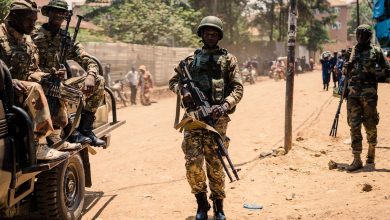Tokyo scrambled fighter jets and raised its alert level after Russian strategic bombers, escorted by advanced fighter aircraft, flew near Japanese airspace in the Sea of Japan. The incident, which Tokyo has labelled “provocative,” occurred just hours after Japan inaugurated its first female Prime Minister, who has pledged to bolster the nation’s military capabilities and significantly increase defense spending. The timing of the Russian flight has amplified existing tensions and sparked considerable debate among analysts and on social media platforms.
The Russian Ministry of Defence confirmed that two Tu-95 strategic missile carriers, capable of carrying nuclear weapons, conducted a “routine patrol” over neutral waters of the Sea of Japan. The bombers were reportedly escorted by Su-35 fighter jets, considered among the most advanced in the Russian Air Force. The flight lasted for more than eleven hours, according to Russian sources, who also released video footage of the bombers in flight.
Japan’s response was swift and decisive. The Japan Air Self-Defense Force (JASDF) immediately deployed F-15 and F-35 fighter jets to intercept and monitor the Russian aircraft. The Japanese Ministry of Defense released a map illustrating the flight path of the Russian bombers, showing they approached Sado Island off the west coast of Japan before turning northwards. This close proximity to Japanese territory triggered significant security concerns within the Japanese government. The Japanese government officially protested the action, calling it a “dangerous and provocative” act that further escalates tensions between the two nations.
This incident marks the 13th time this year that Russian strategic bombers have flown near Japanese airspace, highlighting a pattern of increasing military activity in the region. This pattern underscores the ongoing and escalating military rivalry between the two countries amid broader geopolitical tensions.
The timing of the Russian flight is particularly noteworthy. Japan’s new Prime Minister has made it clear that strengthening Japan’s defense capabilities is a top priority. She has specifically cited Russia’s military activities as a “grave concern.” Her administration is expected to push for a significant increase in the defense budget, potentially altering the balance of power in East Asia. This shift in Japanese policy comes at a time when regional security concerns are heightened due to North Korea’s ongoing nuclear weapons program and China’s growing military assertiveness.
On social media, the incident ignited a flurry of reactions. Some analysts downplayed the risk of direct military confrontation, viewing the Russian flight as a show of force designed to test Japanese resolve. Others expressed concern that the incident could escalate tensions and lead to a miscalculation. Some users on social media used the incident to question Japan’s energy policy, as Japan continues to rely on Russian energy imports despite pressure from the United States to cut ties. Many questioned the long-standing animosity between Russia and Japan, stemming from disputes dating back to the end of World War II.
For more information about Science, check our dedicated section.
The relationship between Japan and Russia has been strained for decades due to the unresolved dispute over the Kuril Islands, which Japan refers to as the Northern Territories. These islands, seized by the Soviet Union at the end of World War II, remain a major point of contention, preventing the two countries from signing a formal peace treaty. The dispute has deep historical roots and continues to fuel mistrust and animosity.
The conflict in Ukraine has further exacerbated the already tense relationship. Japan has joined Western nations in imposing sanctions on Russia in response to the invasion, while Russia has retaliated with its own measures. This tit-for-tat exchange has led to a significant deterioration in bilateral relations.
The geopolitical implications of this incident are significant. The Asia-Pacific region is undergoing a period of strategic realignment, with Japan seeking to strengthen its alliances with Western partners, particularly the United States, Australia, and the United Kingdom. Russia, meanwhile, continues to project its military power in the region, conducting joint military exercises with China and other regional partners. The Russian bomber flight near Japan underscores the growing competition for influence in the Asia-Pacific and the potential for escalation.
The increased Japanese defense spending, coupled with a tougher stance on Russian military activity, could lead to further confrontations in the future. The incident also highlights the potential for miscalculation in a region already fraught with tensions. As Japan seeks to play a more active role in regional security, it must carefully balance its commitment to defending its interests with the need to avoid escalating tensions with Russia. The international community will be watching closely to see how this situation unfolds and whether diplomatic efforts can be made to de-escalate the situation and prevent further incidents.
The incident also serves as a reminder of the complex geopolitical landscape in East Asia. The region is characterized by a web of overlapping territorial disputes, historical grievances, and competing strategic interests. Managing these tensions will require careful diplomacy, restraint, and a commitment to peaceful resolution of disputes. The future stability of the region depends on the ability of all parties to avoid miscalculation and maintain open channels of communication. As DZWatch continues to monitor this evolving situation, we will provide comprehensive coverage and analysis of the key developments and their implications for Algeria and the wider region.




